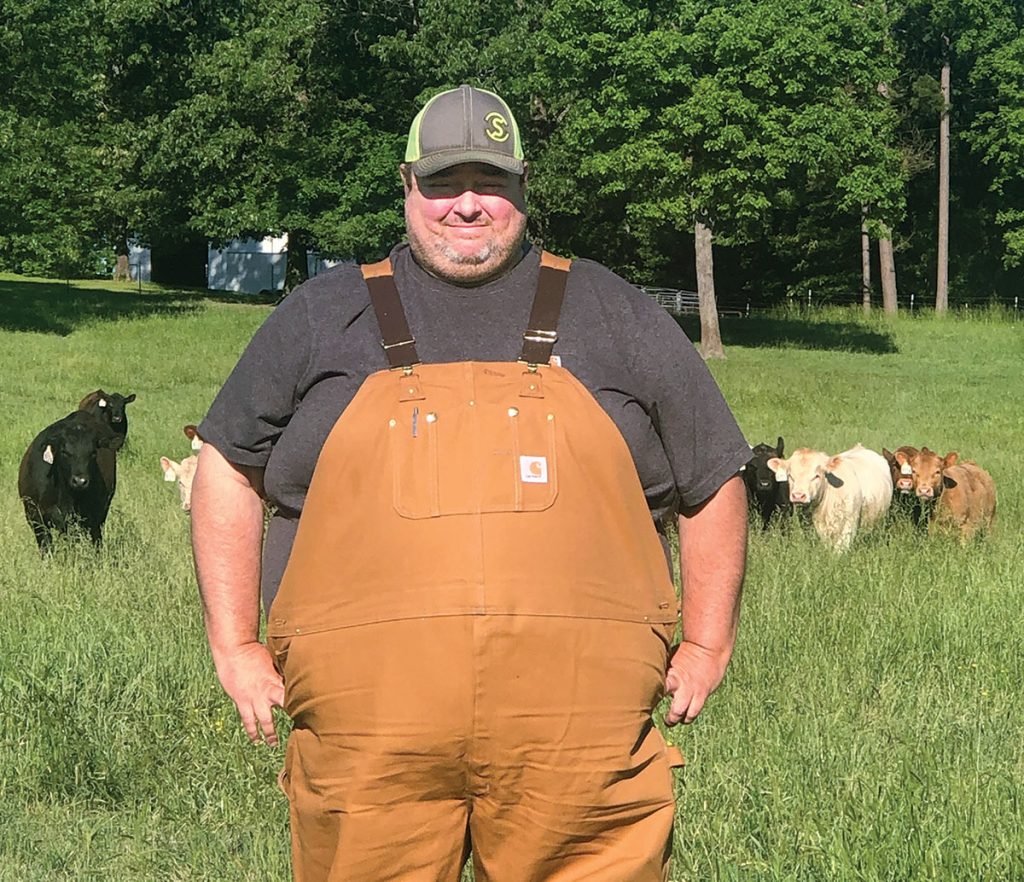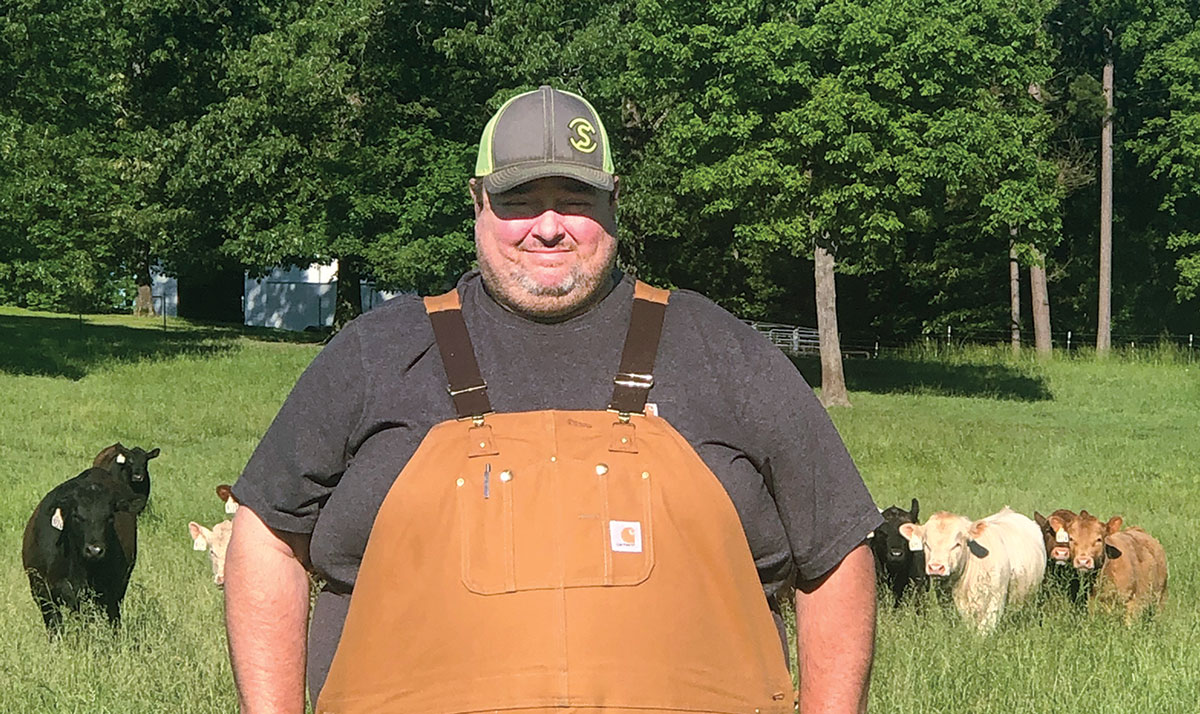
Satterfield Charolais and Angus are among the top breeders of Charolais bulls in the nation
Mark Satterfield of Norfork, Ark., earned a bachelor’s in business with the intention of returning to the family farm.
First, however, he worked as a buyer for a steel company for two years just to get the experience. That experience produced two benefits: his original intention was right and he met his future wife Nancy because he worked with her father. Later she returned with Mark to Satterfield Charolais and Angus, where the couple is raising two children, 15-year-old son Justin and their 17-year-old daughter Taylor.
The Satterfield farm began in the 1970s when Mark’s parents, Loyd and Joanne, purchased land for a commercial Charolais cattle herd which was always bred by commercial Charolais bulls. Mark remembers being 4 or 5 years old and driving a truck while his mom and dad tossed out square bales. Mark obviously had difficulty reaching the petals and kept his foot on the gas. The truck moved very slowly, and when it was time to turn or stop, Joanne would jump out the back and climb into the truck to apply the brake or turn around.
The transition from commercial to breeding stock began while Mark attended college. They stayed with Charolais because production had been good, especially in terms of growth and the pounds the bulls put on the calves.
Transitions take time and the Satterfield transition began with improving genetics through AI and some ET, as well as buying better cattle. For the last 15 years they accessed the best genetics using top-dollar bulls and semen. The result is Satterfield Charolais and Angus is well known and one of the top five Charolais bull sales in the country.
Black Angus entered the picture when Mark and Nancy purchased a beginning breeding herd in 2000. Later, Loyd started his own black Angus herd with Mark and Nancy adding Red Angus as ET recips and donors.
“We needed the diversity because cattle operations here are smaller than those out West, and diversity increases the number of potential buyers,” Mark explained.
The 1,600-acre farm is home to 200 Charolais females and 100 black Angus, in addition to the smaller number of Red Angus. Their bulls breed most of the Charolais females, with semen collected after the 90-day breeding periods. While Mark performs some of the AI, most of it is performed by Marlin Johnson whose 50 years of experience promotes a high fertility rate. The Satterfields send donors to Reprologix in Fort Scott, Kan., to be flushed. All three breeds have highly-prized donor cows whose harvested eggs are sold and used on the farm.
“Technology is an important tool in improving genetics. Right now DNA testing is popular and reveals markers for characteristics like marbling and ribeye size,” Mark said. “What I see now, however, is too much dependence on data. Data is a valuable tool but not the bottom line in my book. My bottom line is appearance because I know what an animal is supposed to look like.”
Mark backs up what he says by culling up to a quarter of his calves especially for structure and phenotype. The farm raises breeding animals, not show stock, and culls accordingly because they don’t want to let those genetics into the herd and, according to Mark, “the quicker the better.”
While genetics are an important part of the picture, environment is also important. The herds are worked twice a year with a high-quality vaccine regimen. Wormers are used two to three times per year, alternating wormers to prevent resistance. The cattle receive minerals with fly control starting in March to prepare their systems before the flies become an issue. If needed, the cattle are easily sprayed in the field because they are so used to being worked.
The goal of the feeding regimen is to produce durable animals ready to work. The farm mixes its own 12 1/2-to 13-percent ration based on a formula devised with the nutritionist and tweaked as needed. Bulls are on full ration while heifers receive a low ration of 4 to 5 pounds per day to help them grow without becoming fat which causes fertility issues. Cows are grass fed with haylage produced on the farm and used as needed. Winter milking cows may receive some feed depending upon the haylage quality.
In spite of having a large acreage, pastures are divided by cross fencing into 20- to 30-acre sections with one cow per acre and one bull per pasture. An additional hot wire is used if bulls are in pastures next to each other so they don’t go “nose to nose.”
Satterfield Charolais and Angus holds two sales a year, a bull sale on the first Saturday in March and a female sale on the fourth Saturday in September. The Satterfields have a website and a Facebook page. The website provides detailed videos supported by an on-site phone service, which allows a customer to be on the phone while the lot of interest is in the ring.
One of Mark’s beliefs is that his children should not compete against their cattle customers. Consequently, three years ago Justin and Taylor started showing goats rather than cattle with the same attention paid to genetics. A facility for the goats is now being built as the herd is large enough that they have begun doelings and bucklings on Facebook.
“A good show goat will bring more than a commercial cow, and the goat operation may actually pay for Taylor’s upcoming college education,” Mark explained.







